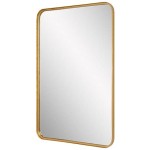How To Screen Mirror From Macbook to Samsung TV
Screen mirroring allows users to display the content of their Macbook screen on a larger display, such as a Samsung TV. This functionality can be useful for presentations, watching movies, or sharing photos with a larger group. This article outlines several methods for achieving this, including wired and wireless options.
Using an HDMI Cable
A direct HDMI connection offers a reliable and stable screen mirroring experience. This method is particularly suitable for activities requiring minimal lag, such as gaming or using professional design software.
1. Identify the HDMI ports on both the Macbook and the Samsung TV. 2. Acquire an HDMI cable and, if necessary, an adapter for the Macbook (e.g., USB-C to HDMI). 3. Connect the HDMI cable to both the Macbook and the TV. 4. On the Samsung TV, select the appropriate HDMI input source using the remote control. The Macbook screen should automatically mirror to the TV. 5. If the display doesn't automatically appear, adjust the display settings on the Macbook. This can usually be found in System Preferences > Displays.
Using AirPlay 2
AirPlay 2 facilitates wireless screen mirroring between compatible Apple devices and Samsung TVs. This method offers greater flexibility and mobility compared to a wired connection. Ensure both the Macbook and the Samsung TV are connected to the same Wi-Fi network.
1. Verify that the Samsung TV model supports AirPlay 2. This information can be found in the TV's user manual or the manufacturer's website. 2. On the Macbook, click the Control Center icon in the menu bar. 3. Select "Screen Mirroring." 4. Choose the name of your Samsung TV from the available devices. 5. The TV may display a code that needs to be entered on the Macbook to establish the connection.
Troubleshooting AirPlay 2 Connection Issues
Occasionally, users may encounter difficulties when attempting to use AirPlay 2. The following steps can help resolve common issues:
1. Confirm both devices are on the same Wi-Fi network and that the network is functioning correctly. 2. Restart both the Macbook and the Samsung TV. 3. Check for software updates for both the Macbook (macOS) and the Samsung TV (firmware). 4. Ensure that AirPlay 2 is enabled on the Samsung TV. This setting is typically found in the TV's network settings. 5. If the issue persists, try resetting the network settings on both devices.
Mirroring Specific Apps with AirPlay 2
AirPlay 2 also allows mirroring content from specific apps, rather than the entire Macbook screen. This is useful for sharing videos or music without displaying other desktop content.
1. Open the app that supports AirPlay 2 (e.g., Safari, Apple Music, or QuickTime Player). 2. Look for the AirPlay icon within the app's controls. It often appears as a rectangle with a triangle pointing upwards. 3. Click the AirPlay icon and select your Samsung TV from the list of available devices. 4. The audio or video content from the selected app will now play on the TV.
Using Third-Party Apps
Several third-party applications offer screen mirroring functionality. These applications may provide additional features or compatibility with older devices that do not support AirPlay 2 natively. However, it's crucial to choose reputable applications and be mindful of potential security and privacy implications.
1. Research and select a reliable third-party screen mirroring application. Read reviews and compare features. 2. Download and install the application on your Macbook. 3. Follow the instructions provided by the application to configure the connection with your Samsung TV. This may involve installing companion software on the TV or using a specific network configuration.
Optimizing Performance
Regardless of the chosen method, optimizing settings can enhance the screen mirroring experience. These adjustments can help minimize lag and improve video quality.
1. Reduce the resolution on the Macbook if experiencing lag. Lower resolutions require less bandwidth and processing power. 2. Close unnecessary applications on the Macbook to free up system resources. 3. Ensure the Macbook is sufficiently charged or connected to a power source to prevent performance throttling. 4. Position the Macbook and the TV in close proximity to minimize interference and improve wireless signal strength (if using a wireless method).
Wireless Display Adapter
For older Macbooks or Samsung TVs that don't support AirPlay 2, a wireless display adapter can provide a wireless mirroring solution.
1. Purchase a compatible wireless display adapter that supports both your Macbook and Samsung TV (e.g., those based on Miracast or WiDi standards). 2. Connect the adapter to the HDMI port of your Samsung TV and power it on. 3. Follow the manufacturer's instructions to connect your Macbook to the adapter wirelessly. This typically involves selecting the adapter's network from the Wi-Fi settings on your Macbook and entering a PIN if required.

Best And Easy Ways To Mirror Mac Samsung Smart Tv

6 Ways How To Mirror Your Macbook Samsung Tv

How Do I Mirror My Samsung To Mac Wireless With One App

How To Mirror Mac Screen Samsung Tv Without Apple

How To Screen Mirror Macbook Samsung Tv

How Do I Mirror My Samsung To Mac Wireless With One App

How To Mirror A Mac Tv Osxdaily

How To Airplay Mirror Mac Samsung Smart Tv Without Apple Redmond Pie

14 Fixes For Screen Mirroring Mac To Samsung Tv Not Working Techwiser

6 Ways How To Mirror Your Macbook Samsung Tv







